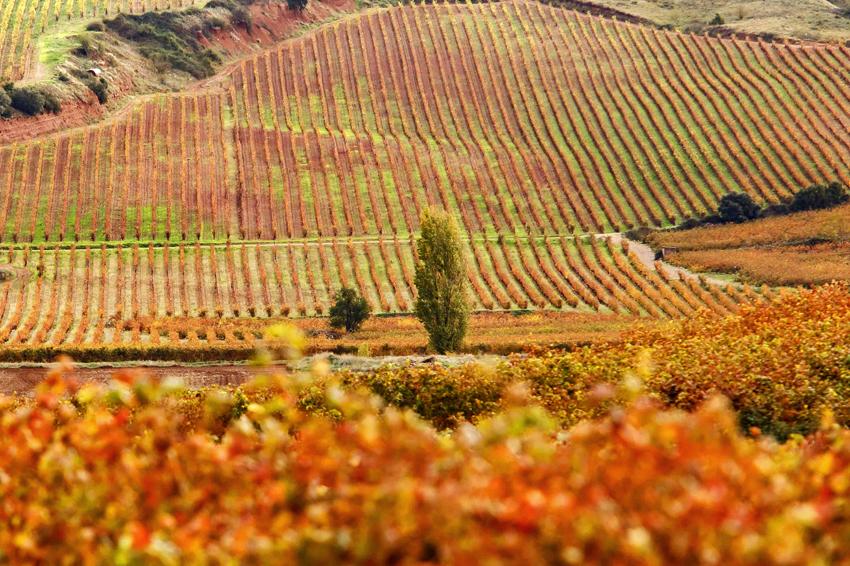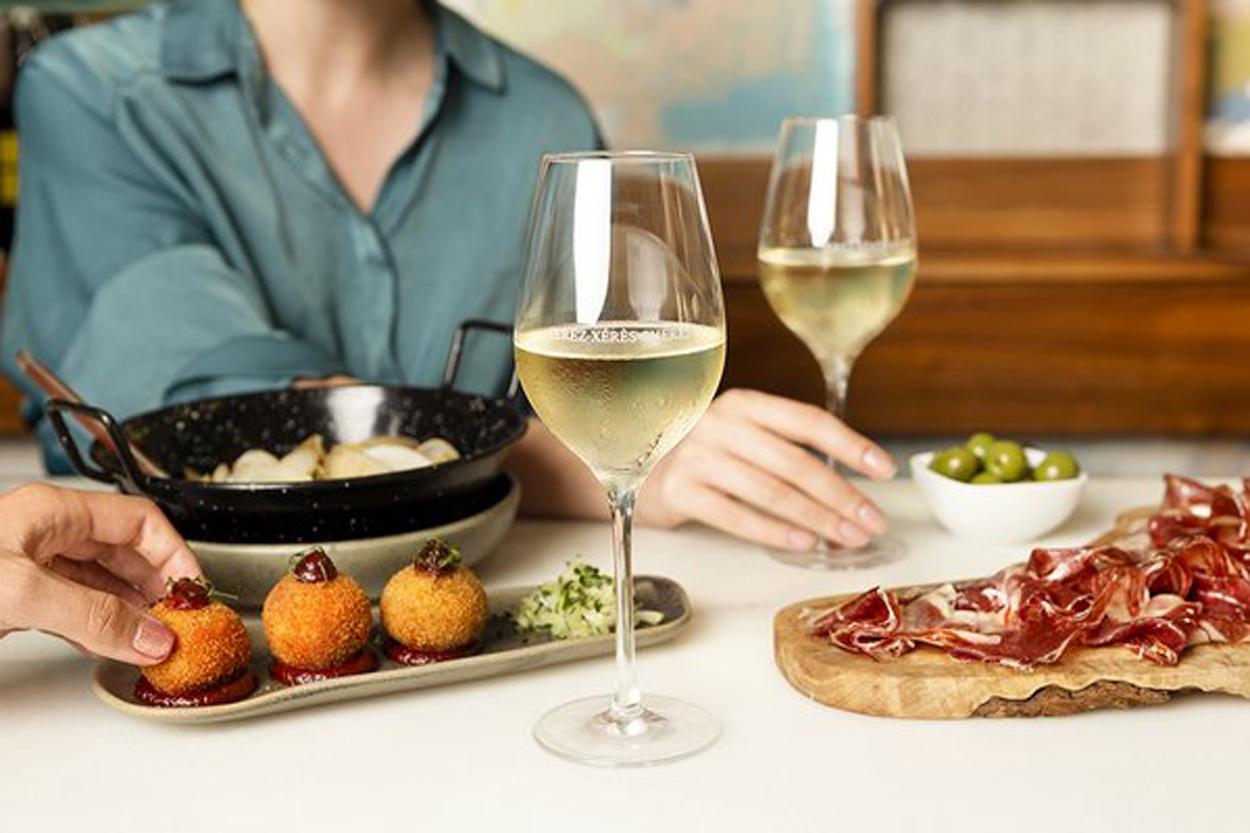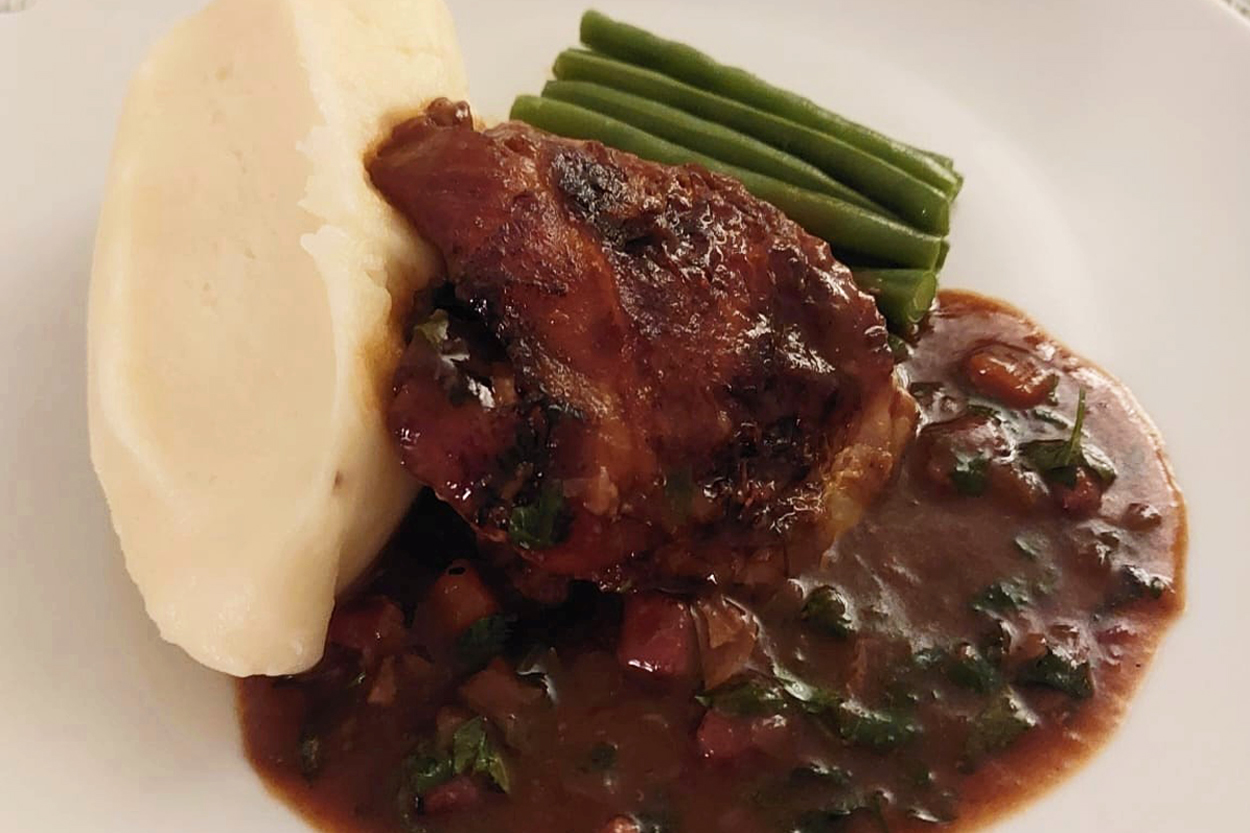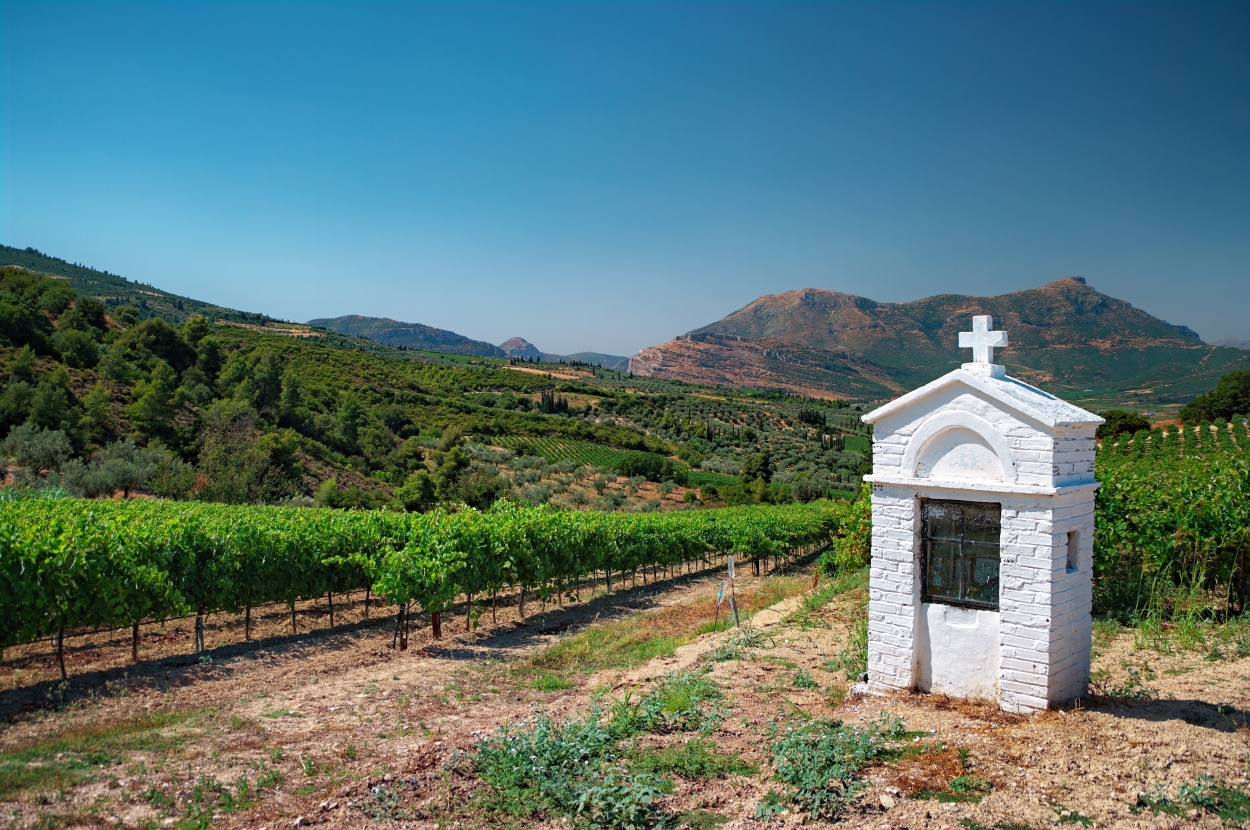Nestled underneath the Cantabrian mountain range in northern Spain lies the country’s most celebrated wine region: La Rioja. Often referred to as Spain’s early answer to fine wine after receiving expert advice and guidance from Bordeaux winemakers in the late 19th century, who were looking for pastures new after the devastating effects of phylloxera on their vineyards.
Rioja established itself in the winemaking world over 150 years ago and wineries can be found the length and breadth of the region, almost 600 in total, stretching from Haro in the west to Alfaro in the east.
Haro is the pinnacle for winemaking in the region as many of the first wineries were established here at the end of the 19th century. The newly built train station replaced horse-drawn carts for transporting wine back over the Pyrenees Mountains to France. This area is known as Barrio de la Estación and has the world’s largest concentration of century-old wineries.
The region is divided into 3 zones, each very different to one another. They are:
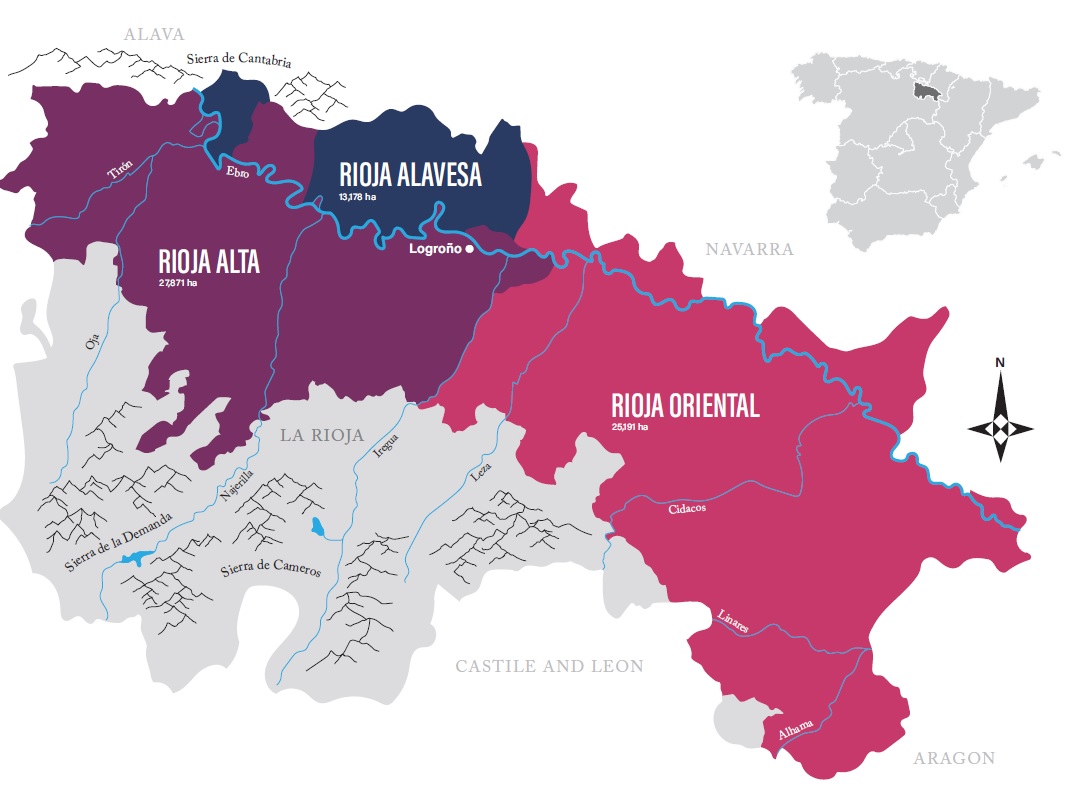

Image credit: riojawine.com
Rioja Alta: The most western and also the highest zone of the region. The soils contain high proportions of iron and clay and when you factor in the cool temperatures from the altitude (700m at its highest point), this ‘terroir’ creates elegant wines with good tannin and acidity levels – perfect for ageing.
Rioja Alavesa: Nowadays this province is classed as belonging to the neighbouring region of the Basque Country, but was once part of La Rioja. Similar in style to wines of Rioja Alta, this northern-central zone is said to have the best vineyards in the whole region which are found on the south-facing chalk and clay soils. The climate is distinctly Atlantic and the Cantabrian mountain range helps to protect the region to some extent from the relentless wind and rain from the north.
Rioja Oriental: Formerly known as 'Rioja Baja' this zone is found in the south-east of the region where the climate is more Mediterranean and as you would expect, much warmer. The soils here are on large, flat ancient river beds and are very calcareous which bare resemblance to the galets pudding stones of the southern Rhone Valley. More approachable, early-drinking as well as good blending wine can be found here.
Know Your Rioja: Grapes and Labels
Riojan wines are not only protected by Spain’s oldest wine classification system known as DOCa (Denominación de Origen) which was officially recognised in 1925, but it also the highest classification available: Calificada. This was awarded in 1991 and makes La Rioja the only place in Spain to have been given the honour.
The regions regulatory board establishes and maintains controls ranging from choosing permitted grape varietals, controlling maximum allowed yields to approving vinification and ageing techniques and even marketing and branding.
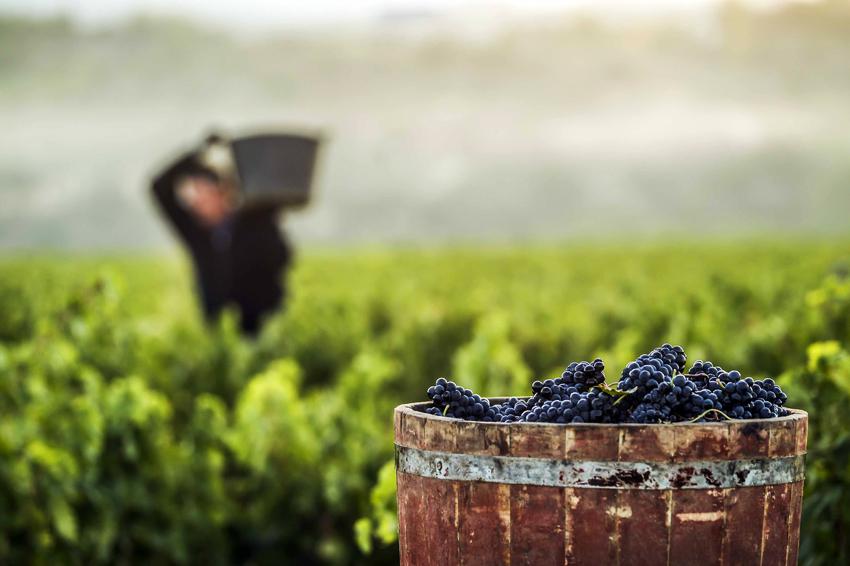

Image credit: riojawine.com
Due to the diverse range of soils and climates in the region, there are many different grapes grown in order to provide the highest quality wines available. The principal varietals are:
Tempranillo: The king of Rioja and a native varietal. It is the most widely planted grape counting for almost three quarters of vineyards in the region. It is capable of producing wines with great ageing potential due to good alcohol levels, colour and acidity balance.
Garnacha: Grown all over Spain but supports Tempranillo extremely well in Rioja by adding aroma and body to blends.
Graciano: Another indigenous grape to the region which is far less known than Tempranillo, but just as complementary in blends by adding freshness and acidity. It is becoming more and more common to find 100% examples of this varietal, particularly from La Rioja Alavesa.
Mazuelo: The last of Rioja’s native varietals and the smallest in terms of production with less than 5% of total vineyard plantings. It falls short in terms of flavour profile, however has an abundance of tannin, acidity and colour which again blends very well with Tempranillo.
Viura: Many people associate Rioja with red wine, but there are also some fantastic whites to be found too. This is the main white varietal producing wines with beautiful floral aromas and great acidity which are ideal for both young and aged white wine. It is known as Macabeo in other regions of Spain.
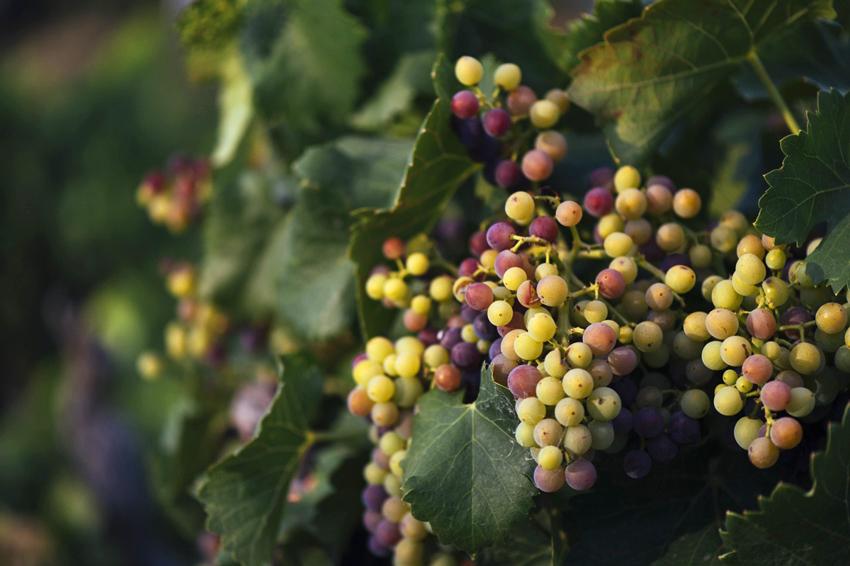
Image credit: riojawine.com
As a result of the variety of grapes grown in the region and infinite blending options, there are of course many different styles of wine too. Riojan wines have great ageing ability and affinity to oak (usually American), which plays a decisive role in the winemaking process as the wine evolves and develops. However, winemakers in Rioja are constantly pushing boundaries therefore it’s important to know what’s in the bottle and what style of wine is best for your palate using the follow label chart as a guide…


Image credit: riojawine.com
Joven: Young wines in their first or second year that see no oak in order to preserve their fresh, fruity flavours. Very easy to drink and often served chilled.
Crianza: Translating literally as ‘aged’, these wines are often in their third year and have spent at least one year ageing in oak casks and one year in bottle (6 months ageing in casks for whites).
Reserva: They are only declared and made in the best vintages due to their good ageing potential. They have been aged for a minimum of three years of which at least one year will have been in oak casks (for whites, the minimum ageing is two years with at least 6 months in casks).
Gran Reserva: They are only declared and made in exceptional vintages and are simply the top wines available. They have been aged for a minimum of two years in oak and three years in bottle (for whites, the minimum ageing is four years of which one year is spent in casks).
If you’d like any more information on La Rioja wine region or would like some wine recommendations, please give me a call in the office on 01325 776446 or email me, andrew@bcfw.co.uk and I’d be happy to help.

